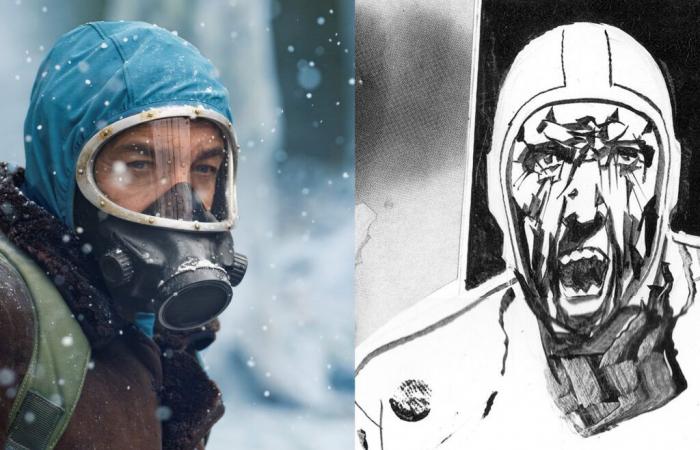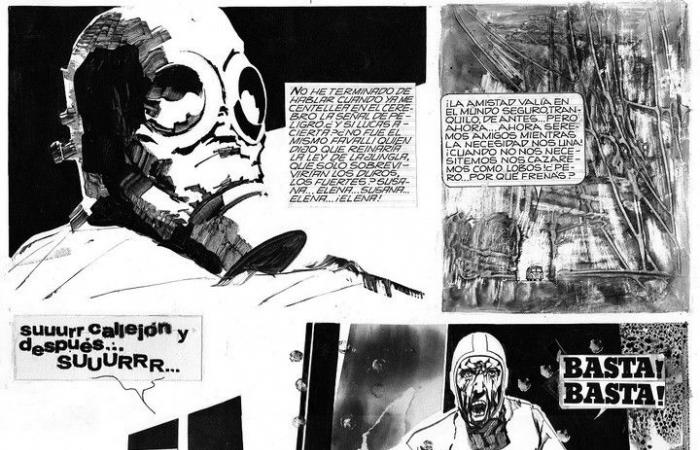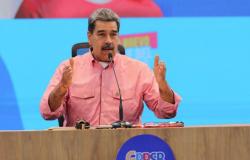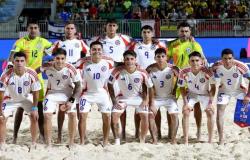The second season of El Eternalauta It was confirmed by Netflixand the news fell like Nevada on Buenos Aires: unexpected, intense, magnetic. The series, which was already a rage before its premiere, will continue. And it will do so under the same oppressive sky, between the snow that does not forgive and a story that returned to be installed in the center of the popular culture of Argentina.
The end of the six chapters left a trail of questions that ignited searches: “The Eternaluta 2”, “Second Season”, “when it opens …”. Those who saw Ricardo Darín as Juan Salvo Face the invasion want answers. And continuity.
Héctor G. Oesterheld wrote a second part. But the question is another: Which of all will take Netflix? The best known, the most faithful, the most political, the most experimental? Because the Eternaluta does not have a single path. And each version says something different from the time it was told.
How many books and comic are there from El Eternalauta series?
first you have to say it: the character of the character created by Héctor Germán Oesterheld and Francisco Solano López Raza the infinity. As its protagonist, The Eternaluta It seems to have no end: travel in time, it reinvents itself and, like every classic, becomes immortal. The adventures of Juan Salvo – that name that already anticipates its destiny – are many, and their editorial route can be as fascinating as confusing.
After the original publication of The Eternaluta Between 1957 and 1959 In the magazine Hora Zero, with illustrations by Solano López, almost two decades passed until a continuation appeared. It was in 1976 when Oesterheld wrote The Eternaluta IIalready in hiding, shortly before being kidnapped by the Argentine military dictatorship.
 Alberto Breccia reviewing his original sketches of El Eternalauta.
Alberto Breccia reviewing his original sketches of El Eternalauta.However, the saga – and the series – continued on their way even with their creator officially detained and missing. In 1983 it appeared The Eternaluta – Third Partwritten by Alberto Ongaro and drawn by Oswal and Mario Morhain. In the 90s new ramifications would arrive, such as the repentant world and cosmic hatred, signed by different screenwriters and illustrators. Production never stopped: the most recent delivery is The manuscripta tribute to Oesterheld that can be read for free.
Alberto Breccia’s version: Remake, “Second Season” or New version?
In the extensive interval between THE ETERNAUTA AND THE ETERNAUTA II —As said, both creations of Oesterheld and Solano López – something like a dark and strange miracle happened. Twelve years after the classic version today, Oesterheld rewritten the scriptor at least he adapted his plot line, to create a new comic with the same name, but a radical turn: the drawing was in charge of one of the great masters of the world comic, Alberto Brefia.
They are other times. The so -called “golden age” of the Argentine cartoon ends, but at the same time the medium gains legitimacy with the first world time biennial. The comic begins to be a little less popular, and at the same time, more serious.
 The version of El Eternalauta de Breccia and Oesterheld, 1969.
The version of El Eternalauta de Breccia and Oesterheld, 1969.In that context, the version of El Eternalauta published in 1969 appears by people people, which broke with all traditional comic conventions. Breccia – who had already worked with Oesterheld in bright comics such as Sherlock Time, Mort Cinder y Ernie Pike– He used mixed techniques: inks, textures, intervened photographs. The result is an oppressive atmosphere and loaded with metaphorical meaning.
Breccia, expressionist, experimental, radical, one of the most innovative artists of the world cartoon, transformed the Eternaluta into a disturbing workwith collages and shadows (and especially blank spaces), which broke with any visual canon known until then.
But the change was not only aesthetic: this version introduced a strong and contemporary political turn. In it, they are the great powers – United States and the then Soviet Union – who deliver South America to the invaders.
 The Eternaluta of 1969, by Alberto Breccia.
The Eternaluta of 1969, by Alberto Breccia.The result was a revolutionary cartoon. The visual style and the political subtext were not accessories: they are integrated to the heart of the story. As the comic specialist and writer pointed out Juan Sasturain, this version of El Eternalauta “does not resemble the previous one.”
Criticism a The Eternaluta by Alberto Breccia: censored and cult
The alien invasion of this version of The Eternaluta It was no longer just a narrative hook: it was An allegory of imperialism, of control systemsof fear as a tool of domination.
This political and gloomy reading bothered editors, readers and the power of turn, in Argentina under the de facto government of Juan Carlos Onganía. The publication of the strip in the people magazine was interrupted. The combination of dense and challenging aesthetics did not fit the publication.
 Alberto Breccia was born in Montevideo in 1919 and became a key figure of the Argentine and world comic.
Alberto Breccia was born in Montevideo in 1919 and became a key figure of the Argentine and world comic. Before the magazine’s refusal to continue the publication, Oesterheld tried to condense the story and give it a closure in a few chapters. The 1969 version ended up being much shorter: it occupies less than a tenth of the original cartoon, which had been published for two years. The trouble left: Breccia himself considered until the end of his life that the true masterpiece was the version illustrated by Solano López, not his.
For decades, this version was difficult to get. Only over the years, and thanks to the recovery of Oesterheld’s legacy, the work began to be valued by its anticipatory power.
THE ETERNAUTA: A ALBERTO BRECTY TOTAL
For Breccia, THE ETERNAUTA OF 1969 It was an artistic manifesto. With total creative freedom, until the magazine withdrew the strip, broke with regular vignettes, clear funds and recognizable characters (one of the main complaints of the weekly editors).
The stroke is deformed. Some techniques: burned lights, violent contrasts and compositions that were closer to the expressionist engraving than to traditional drawing. Alberto Breccia – who also had a solid, although less known, career as a painter – overturned in this work palpable influences: from German cinema to the Soviet avant -garde cinema, with echoes from Serguéi Eisenstein.
Be able to experiment with The Eternaluta in 1969 He opened the way to masterpieces of his maturity, as his illustrated versions of “The heart of the Delator”, by Edgar Allan Poe, or “La Gallina Degollada”, by Horacio Quiroga. Breccia – who worked with his father and his brothers as a “trumpe” in a slaughterhouse in the La Matanza neighborhood – used a Gillette or spatula knife, both as a pen or brush.
His technique did not draw: he destroyed the image, opened it in layers, as if the cartoon were alive meat, ready to reveal what beats inside. As only a genius dares to do.
The Eternaluta, season 2: Breccia legacy?
Will the second season take something of the Breccia Spirit? The first already showed his own look: the story updated, gave memorable scenes, visual identity and, again, a snowy Buenos Aires. The Eternaluta It was always a different way of looking at the time that touches us – with pandemic, snow or political crisis. And as they usually say in good comics … cOntinuar.







